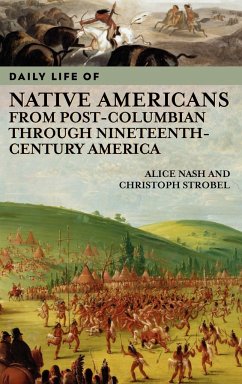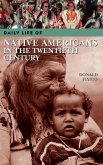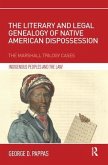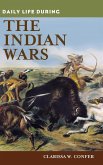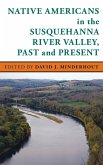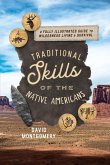When Columbus discovered America in 1492, there were over five hundred indigenous groups living in what is now the United States. Despite the breathtaking diversity and inventiveness of these peoples, the culture, customs, and history of Native Americans are relatively unknown to many students and general readers today. In ten narrative chapters, organized by geographical region, Nash and Strobel examine the real history of Native Americans. How did Natives interact with European settlers? Did they really have pow-wows? Where did Indian children go to school? Did chiefs really wear feathered headdresses and smoke peace pipes? Dispelling the myths and stereotypes, the day-to-day lives of these tribes and groups during a time of tremendous change is discussed. Chapters include details of daily life such as: clothing; colonization; education; farming & hunting; households & homes; leadership & political power; spirituality, rituals & customs; trade & alliance; warfare; women's & children's roles. Readers will learn the other history of indigenous people; not what is told in many history books, or seen in Hollywood movies and old westerns. When Columbus discovered America in 1492, there were over five hundred indigenous groups living in what is now the United States. Despite the breathtaking diversity and inventiveness of these peoples, the culture, customs, and history of Native Americans are relatively unknown to many students and general readers today. In ten narrative chapters, organized by geographical region, Nash and Strobel examine the real history of Native Americans. How did Natives interact with European settlers? Did they really have pow-wows? Where did Indian children go to school? Did chiefs really wear feathered headdresses and smoke peace pipes? Dispelling the myths and stereotypes, the day-to-day lives of these tribes during a time of tremendous change is discussed. Chapters include details of daily life such as: clothing; colonization; education; farming & hunting; households & homes; leadership & political power; spirituality, rituals & customs; trade & alliance; warfare; women's & children's roles. Readers will learn the other history of indigenous people; not what is told in many history books, or seen in Hollywood movies and old westerns. Greenwood's Daily Life through History series looks at the everyday lives of common people. This book will illuminate the lives of this indigenous group and provide a basis for further research. Black and white photographs, maps and charts are interspersed throughout the text to assist readers. Reference features include a timeline of historic events, sources for further reading, glossary of terms, bibliography and index.
Hinweis: Dieser Artikel kann nur an eine deutsche Lieferadresse ausgeliefert werden.
Hinweis: Dieser Artikel kann nur an eine deutsche Lieferadresse ausgeliefert werden.

